Introduction:
In the digital age, your website is your business’s front door. But having a site isn’t enough—it must be optimised for performance, user experience, and visibility.
Website optimisation is the strategic process of enhancing various elements of your site to improve its functionality, search rankings, speed, and conversions. Let’s explore a comprehensive approach to website optimisation that can take your business to the next level.
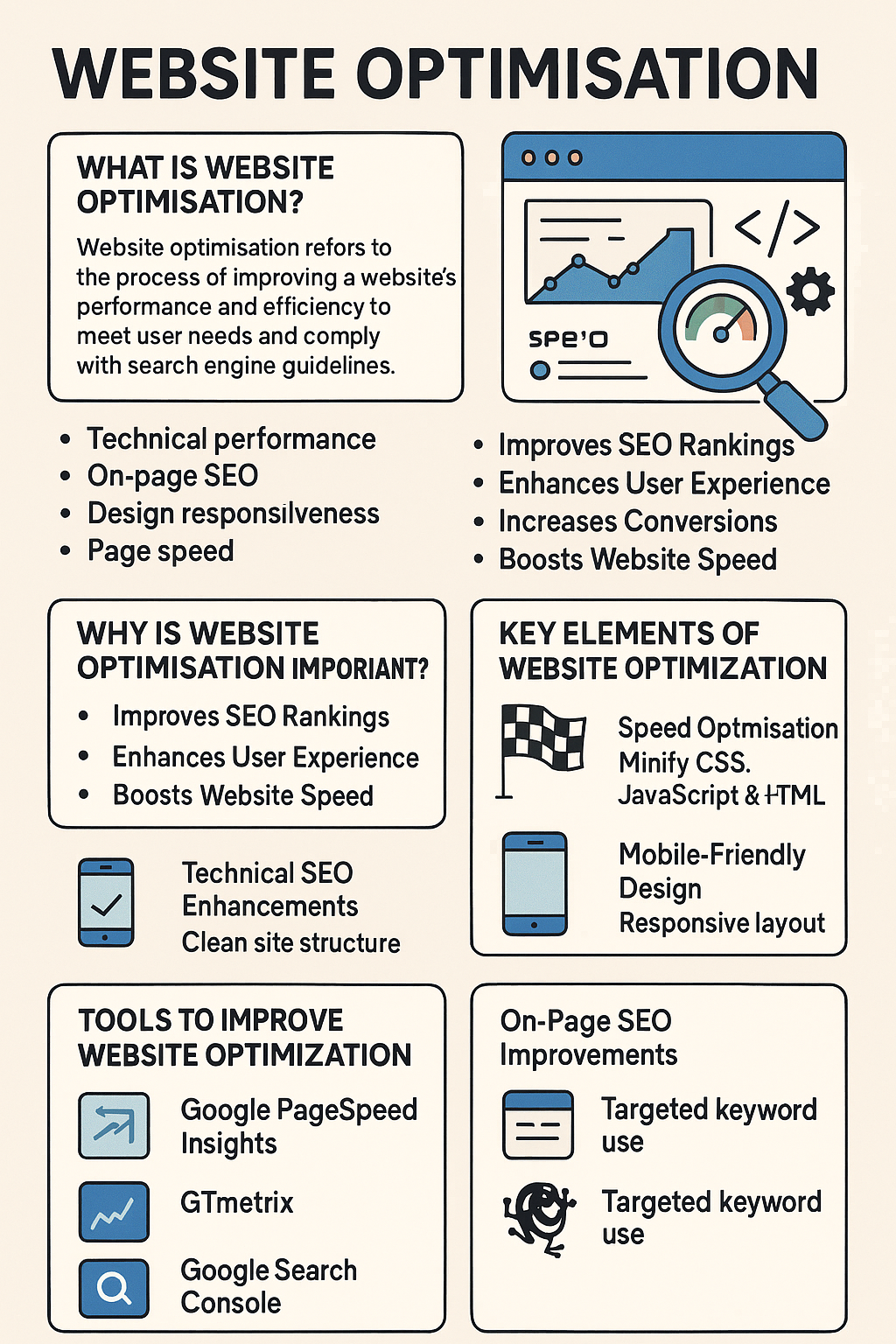
What is Website Optimisation?
Definition:
Website optimisation refers to the process of improving a website’s performance and efficiency to meet user needs and comply with search engine guidelines. It includes SEO, speed, UX design, and content optimisation.
Why It Matters:
- Increases search engine rankings
- Reduces bounce rate
- Enhances user satisfaction
- Boosts conversion rates
Website optimisation involves improving all aspects of a website to ensure it performs efficiently for users and search engines. It includes:
- Technical performance
- On-page SEO
- Design responsiveness
- Page speed
- Mobile compatibility
- User experience (UX)
A fully optimised website not only ranks higher on search engines but also keeps users engaged and encourages conversions.
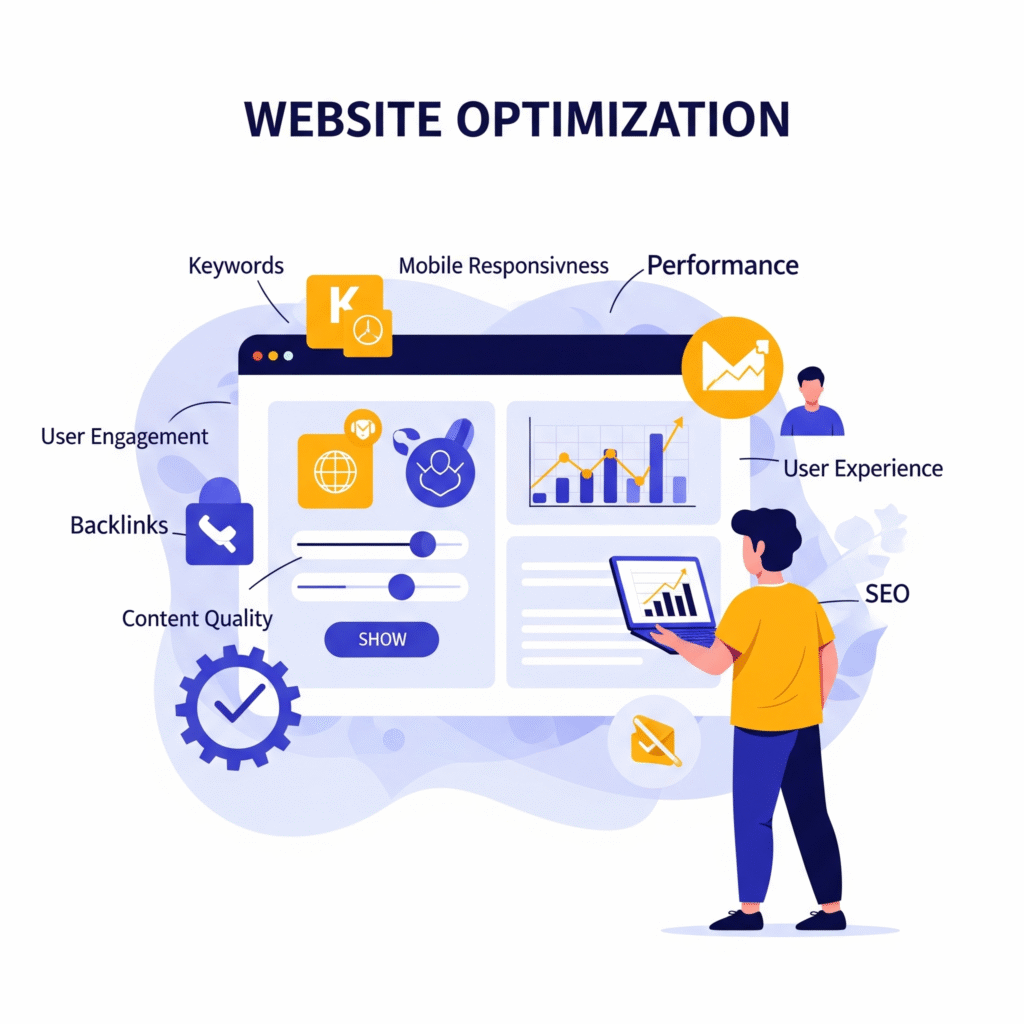
Why is Website Optimisation Important?
a. Improves SEO Rankings
Search engines reward fast, well-structured, and user-friendly websites. Optimisation helps with better crawling, indexing, and ranking on SERPs (Search Engine Results Pages).
b. Enhances User Experience
Users expect fast, seamless, and intuitive websites. A slow or poorly designed website drives visitors away, while an optimised one increases satisfaction and time on site.
c. Increases Conversions
Optimised landing pages, calls to action (CTAs), and checkout processes help convert visitors into leads or customers more effectively.
d. Boosts Website Speed
Page load time affects SEO, bounce rate, and user satisfaction. A faster website keeps users engaged and improves your conversion potential.
Key Elements of Website Optimisation
a. Speed Optimisation
Slow websites lead to high bounce rates and poor rankings. Key techniques include:
- Minifying CSS, JavaScript & HTML
- Enabling browser caching
- Using a Content Delivery Network (CDN)
- Optimising and compressing images (e.g., WebP format)
- Reducing server response time (TTFB)
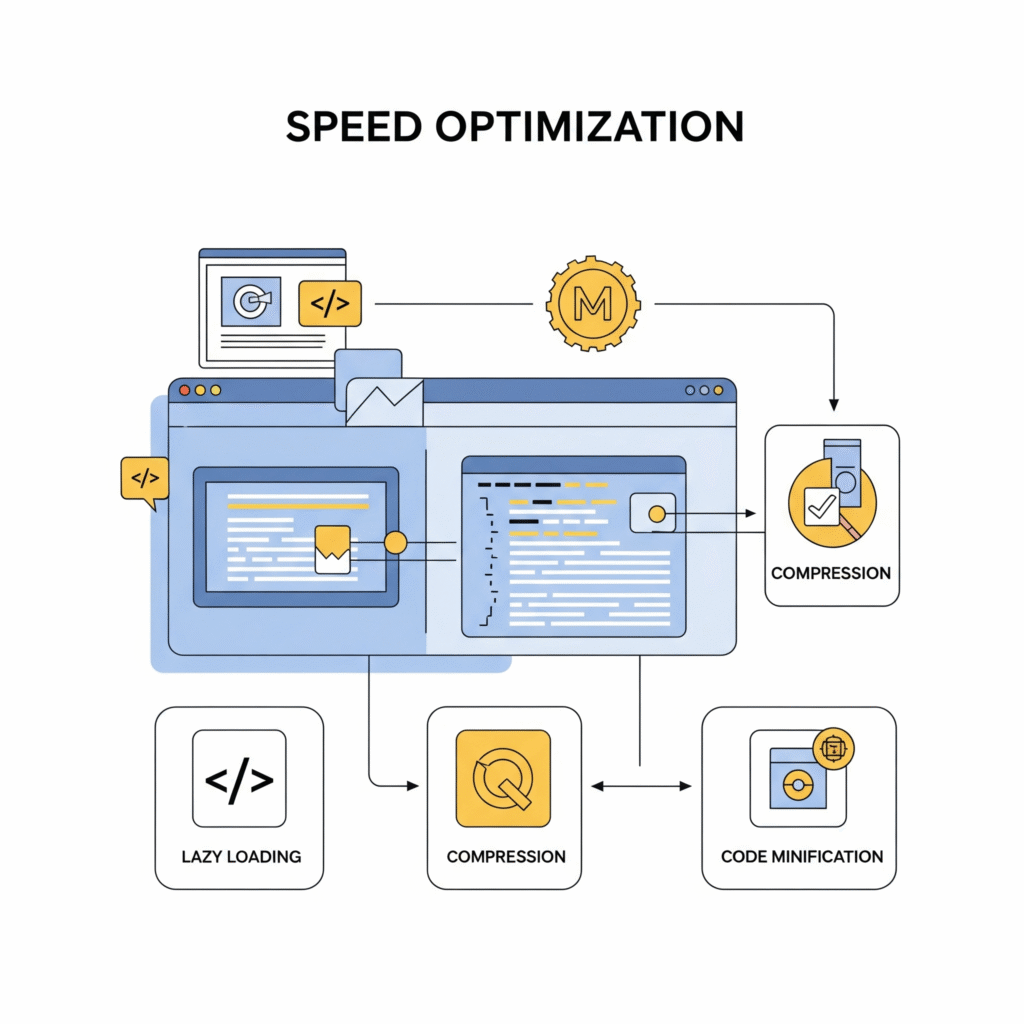
b. Mobile-Friendly Design
With over half of web traffic coming from mobile devices, ensure:
- Responsive layout
- Touch-friendly navigation
- Fast loading on 3G/4G
- Mobile-optimised fonts and images

c. Technical SEO Enhancements
A technically sound website helps Google understand and rank your content:
- Clean, crawlable site structure
- Secure HTTPS
- XML sitemap and Robots.txt
- Canonical tags
- Structured data (Schema.org markup)
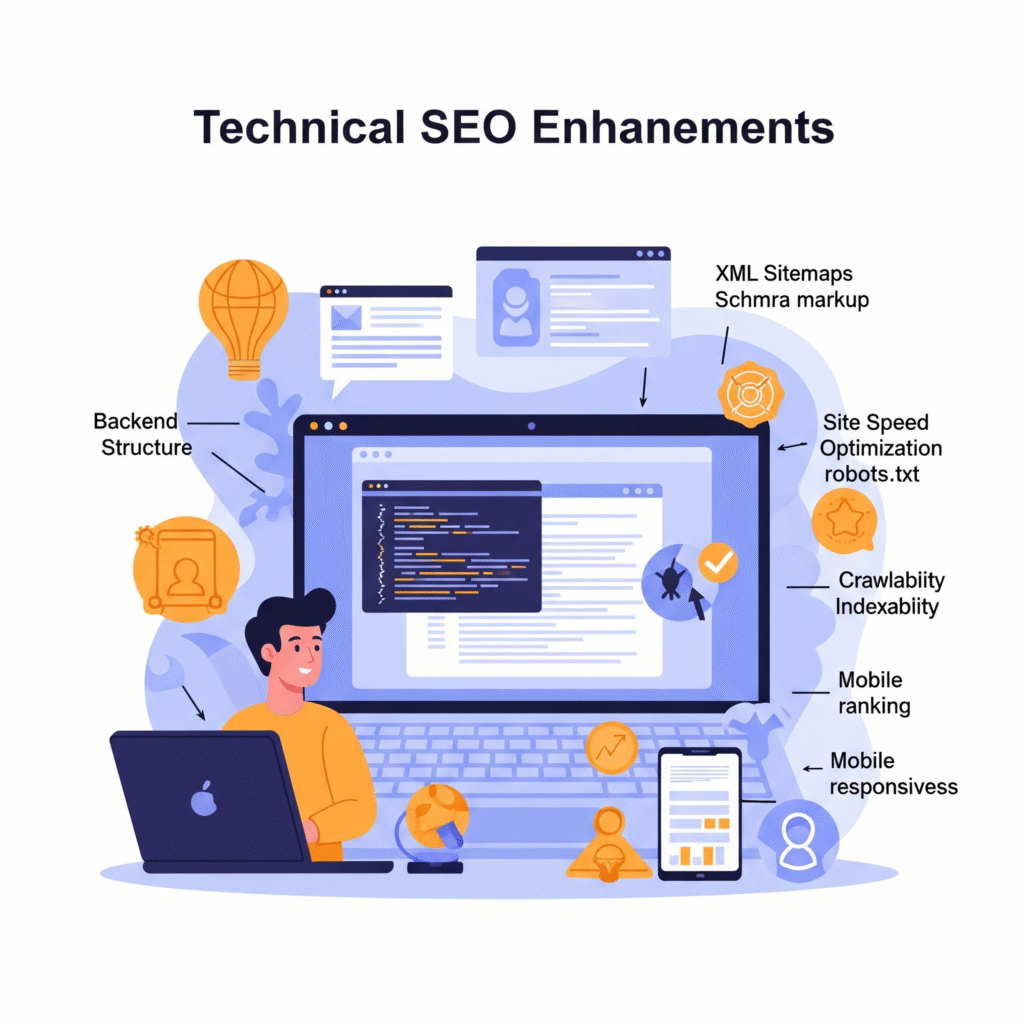
d. On-Page SEO Improvements
This ensures each page is optimised for both users and search engines:
- Targeted keyword use in content, headings, and URLs
- Compelling meta titles and descriptions
- Proper header hierarchy (H1, H2, H3)
- Internal linking to relevant pages
e. UX & Design Optimisation
A great user experience improves time on site and trust:
- Simple navigation
- Clear CTA buttons
- Consistent branding
- Minimal distractions
- Readable typography and spacing

Tools to Improve Website Optimisation
Use these tools to evaluate and enhance your website:
| Tool | Use Case |
|---|---|
| Google PageSpeed Insights | Page speed performance and suggestions |
| GTmetrix | Load time, waterfall breakdown |
| Google Search Console | SEO performance, index coverage |
| Screaming Frog | Technical SEO crawling |
| Hotjar | Heatmaps and user behaviour tracking |
| Yoast SEO (WordPress) | On-page SEO analysis |
Common Mistakes to Avoid
- Uncompressed images are slowing down the load time
- Too many plugins that conflict or overload the site
- No SSL certificate, making the site insecure
- No mobile optimisation, alienating mobile users
- Ignoring analytics, missing performance opportunities
- No clear CTA, leading to poor conversions
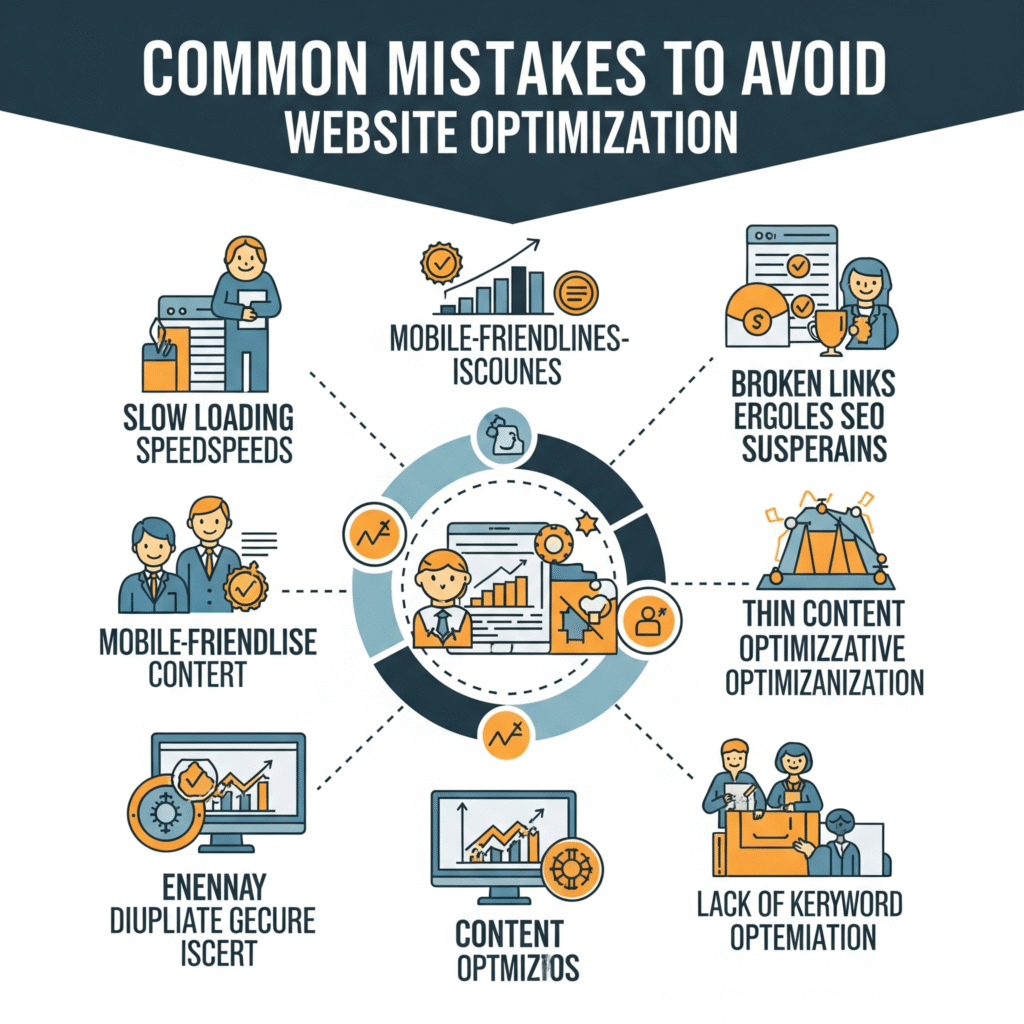
Advanced Tips for Website Optimisation
a. Core Web Vitals
Focus on Google’s metrics:
- Largest Contentful Paint (LCP)
- First Input Delay (FID)
- Cumulative Layout Shift (CLS)
b. Lazy Loading
Improve speed by loading images and videos only when they enter the viewport.
c. Server & Hosting Improvements
- Choose a fast, reliable host
- Enable GZIP compression
- Use HTTP/2 protocol
d. Content Optimisation
- Answer user intent clearly
- Update outdated content
- Add alt text to all images
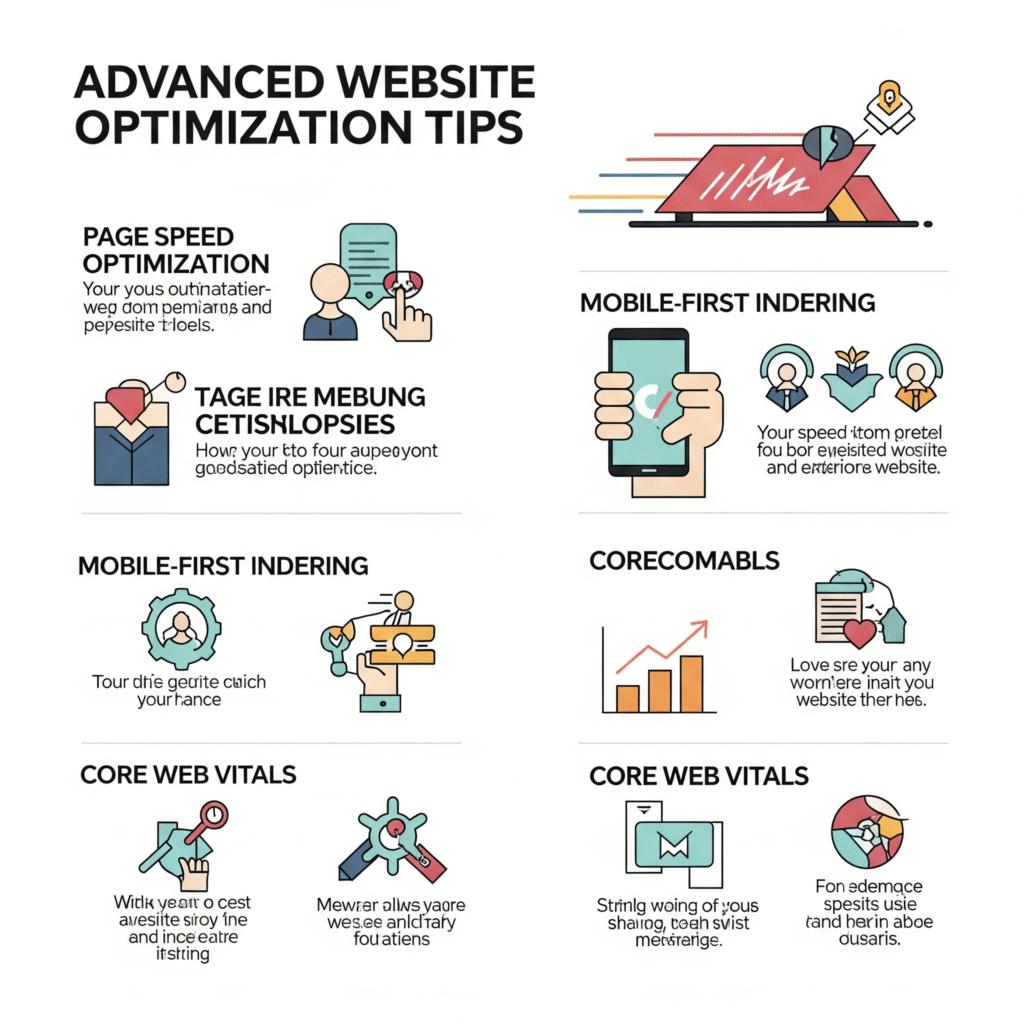
Measuring Success
Use KPIs to track optimisation results:
- Bounce rate
- Average session duration
- Page load time
- Conversion rate
- Organic traffic growth
- Search engine rankings
Final Conclusion
Website optimisation is not a one-time fix—it’s an ongoing process that combines SEO, performance, and UX enhancements. A well-optimised website improves visibility, builds trust, increases engagement, and ultimately drives conversions. Whether you manage a service-based website, blog, or eCommerce store, investing in optimisation will pay off in traffic and business growth.
Send me a message!
I will be happy to hear from you! Feel free to view my services and work with me on your next project.